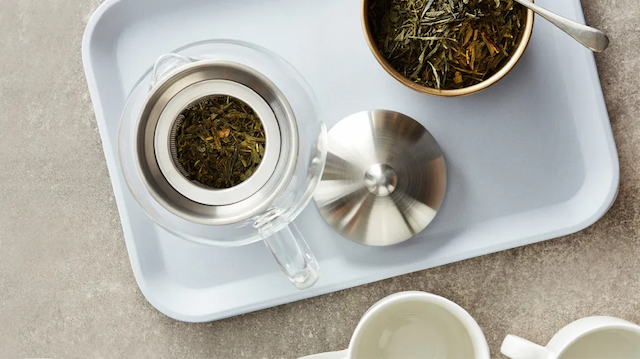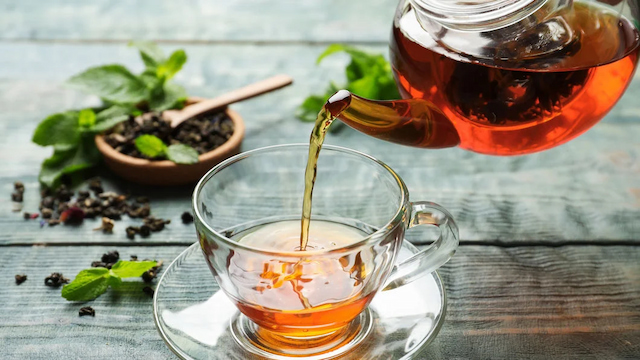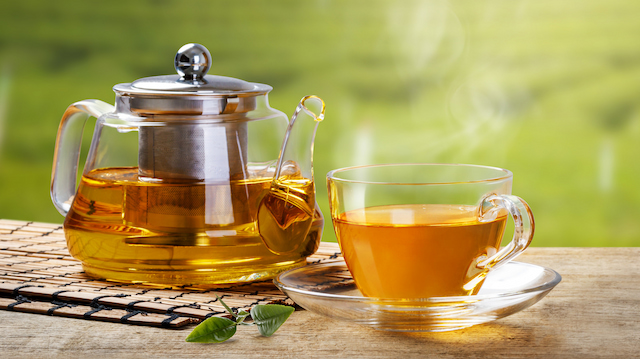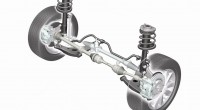Important Reasons Why You Should Be Brewing Loose Leaf Herbal Tea
Recent research has confirmed what many of us knew already: Australia is a nation of tea drinkers. According to this study, in the 12 months before June 2016, 9.8 million Aussies drank 9.5 tea cups per week, with 9.8 million individuals indulging in this beverage at least once per week.

However, the myriad benefits of tea are only noticeable if it’s gathered, produced, and brewed the right way. If you’ve wanted to create a tea-drinking habit but think tea tastes like boring, astringent brown tree water, I can bet the blame lies with tea bags. Keep reading to learn the importance of brewing this drink and how to make a cup of flavourful loose leaf herbal tea to your taste.
The Trouble With Tea Bags
The main advantages of a tea bag are speed and convenience: it brews quickly and requires no additional equipment. But that’s pretty much it. Tiny tea dust particles frequently over steep and become bitter very quickly, and the types of tea that end up in teabags don’t have many complex flavours.
The faster a tea leaf brews, the coarser, rougher, and more unbalanced the brew will taste compared to that made from larger tea leaves. Factories often grade tea based on its size. The tiniest grade of tea, known as “dust,” which makes up almost all teabags on the market, is the smallest.
Essential Reasons for Brewing Loose Leaf Herbal Tea
Oftentimes, people think of tea as coming in a bag with leaves that have been pre-packaged and sealed. However, there’s a certain art to loose leaf herbal tea that many people are unaware of. The careful process of selecting, measuring and steeping loose leaf herbs is a skill that takes time to perfect, but it is well worth the effort.
It’s of a Higher Quality
Most bagged teas you find in stores are mass-produced and made from dust and fannings, which are tiny left-over pieces of tea after making loose leaf tea. The more premium beverages are too expensive to be used in tea bags since they’re whole leaves that haven’t been cut up. This results in a better tasting, higher quality cup of tea.
It’s Fresher
Mass-produced tea bags are frequently filled with tea leaves from various regions and often travel great distances before they arrive on supermarket shelves, making them less fresh. It’s usually recommended that you consume tea within six months of its harvest date for the best flavour.

It Tastes Better
You won’t notice the differences in taste and aroma between leaf types and regions because mass-produced bagged tea contains standardised blends. Brew loose leaf tea for a more sophisticated tea experience or if you want something that tastes better, is fresher and is healthier.
Tea bags have a predictable but one-dimensional flavour that is bold and astringent and has a small range of flavour expressions. Bagged teas may contain stems and seeds that can cause the tea to taste bitter because of the undiscerning power of machine harvesting.
It’s More Diverse
Chamomile and mint tea are just two types of herbal tea. There are many different kinds of herbal teas, including rooibos, lavender, lemongrass and dandelion, and each is unique in terms of its cultivars, geography, climate, and production method. When you decide on trying different blends that include flowers and petals, you’ll be amazed by the various aromas and flavours that offer a unique tea-drinking experience.
It’s Better for the Environment
The majority of tea bags aren’t compostable, and of those that are, very few people take the time to compost them. You can place the tea in loose leaf form directly on a compost pile, which helps you use less packaging. By doing this, you’re also reducing your carbon footprint and waste output.
It’s Good for Your Health
Tea has anti-inflammatory and antioxidant properties that can improve your overall health. That stands both for tisanes and true teas. For example, fresh leaves have the highest concentrations of catechins, the main chemicals that give green tea health benefits.

Is loose tea healthier than bagged tea? The answer is a resounding yes. Catechins quickly lose their effectiveness when exposed to the outside environment. Due to the greater surface area exposed, the highly processed nature of dust and fannings in tea bags degrades more quickly.
You should consume loose leaf herb tea whenever possible. Since herbal teas don’t contain caffeine, they’re kid-friendly – simply put them in your children’s BPA-free bottles to let them reap the potential health benefits of the many nutrients it holds.
How to Brew Herbal Loose Leaf Tea?
Herbal teas are much simpler to make than true teas like green and white tea. Herbal tea may taste better if you take a few simple steps from making regular tea. Always try to do the following, regardless of the type of herbal tea you are brewing.
For Infusion
- Use a clean kettle to boil fresh spring water.
- Preheat your teapot or mug by pouring hot water in and out.
- Use at least one teaspoon of tea leaves per cup of water, and for blends with large, fluffy leaves, use even more.
- If using a mug, pour water into it and cover with a lid or a small saucer.
- Steep it for at least five minutes.
- Strain.
- Pour your tea into a unique mug to enhance your drinking experience.
For Boiling
- Find a clean, small saucepan free of any overpowering smells for boiling.
- For each cup of water, add at least 3/4 teaspoons of tea.
- Add tea and spring water to a saucepan. Use at least 1 1/2 cups of water to make one cup of tea because some of it will evaporate.
- Water should be brought to a boil over a medium fire, then simmered for an additional 5 to 15 minutes on low heat.
- Pour into cups after straining.
- If needed, add sweetener.
Instead of just steeping, you can boil teas made with ingredients like ginger, turmeric, rose hips, and most dried fruits. When making tea from fresh ingredients like ginger, boiling works best; others, such as mint, rooibos, chamomile, lavender, and rose, are better infused. Rose and lavender should not be brewed for an extended period with boiling water as they may release an excessive amount of bitterness.



